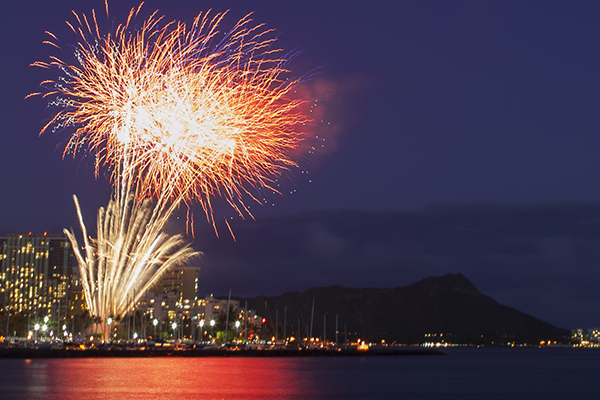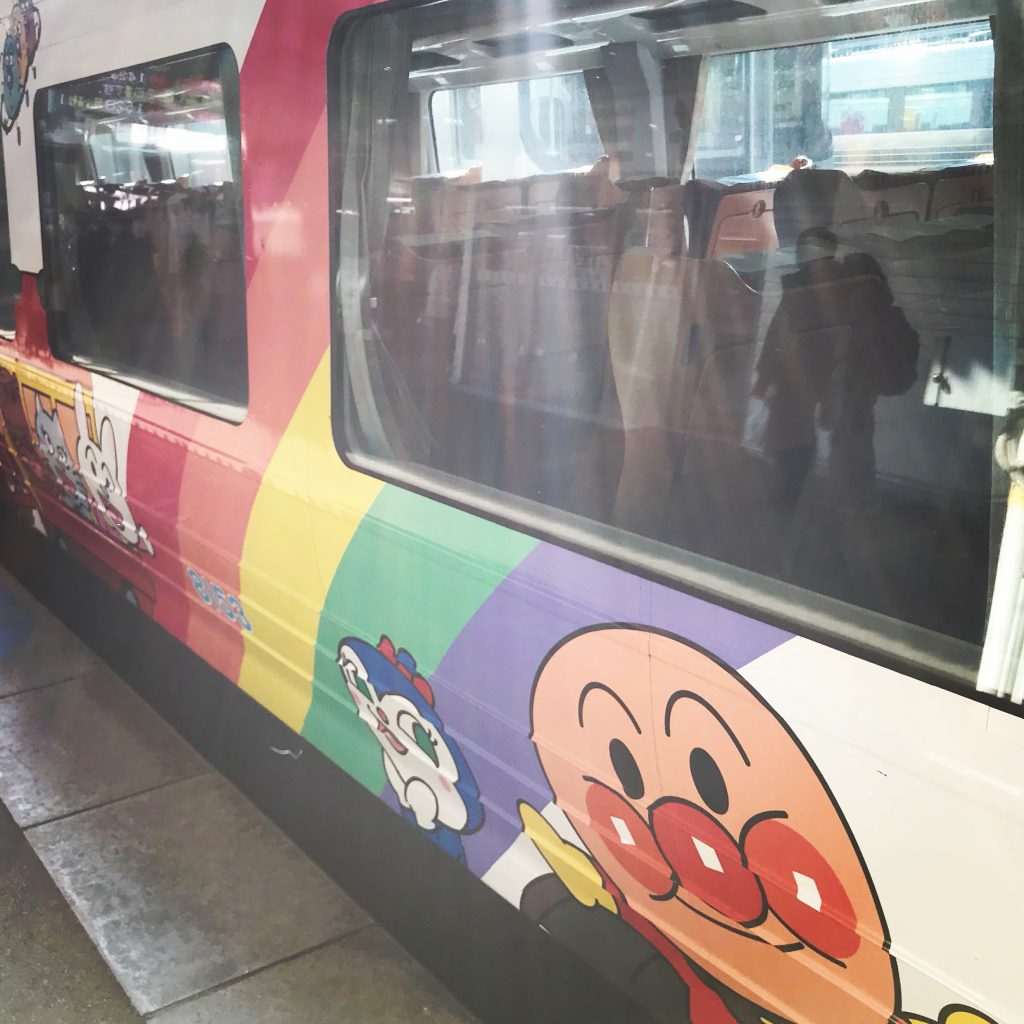カテゴリー:英語学習
Trains in Japan 英会話・英語 アミック
The other day I was in the book store. I usually go to the Men’s Interest corner, because I like magazines about cars and motorbikes. I was surprised, because there was a young lady in that section. Of course, I was a little curious about what kind of magazine she was looking at, so I took a quick glance. It was a magazine about trains. So it got me thinking about trains in Japan.
I grew up in Hawaii and parts of the mainland in the US. When I was living in the mainland, I almost always lived in the countryside. Unfortunately, I never had the chance to ride a train. In Hawaii, we don’t have any trains except for a tourist attraction that was used to haul sugarcane from the plantations to the refinery. You can see this train in the “Train, Train” music video by the rock band “The Blue Hearts”. Unfortunately, I never had a chance to ride it.
I first came to Japan in 1994 and that was my first experience riding on a train. I was living in Nagasaki, so I rode the train to neighboring cities and also the street car. It was amazing how punctual and clean the trains were. Coming from Hawaii, we only have “The Bus” and it’s always late, crowded and slow. With this new found public transportation, I always looked forward to riding the train and still do.
I was a little surprised when I noticed how many people in Japan are enthusiastic about trains. When you ride trains, you can often see people taking pictures of the train along the tracks. It is also surprising how many people know all of the different types of bullet trains (Shinkansen) and local trains. On the news, you can usually see a long line of people waiting to ride on a train when it’s the train’s final run. The passengers waiting in line always talk passionately about that particular train and how they will miss it. Many little children, especially boys, also love Purare-ru- the plastic train sets from Takara/Tomy. Sanrio also has the “Shinkansen” line of character goods, which feature cute bullet trains.
Here in Ehime, we have the Anpanman Shiokaze Express. No matter how old passengers are, they always seem to be happy when they get to ride on “the Anpanman train”. They even sell the miniature trains at the convenient stores inside the station. If you ride on the Anpanman train and look hard enough, you will probably be able to see a train enthusiast taking a picture of the train.
Personally, my favorite train to ride is the Iyotetsu street car. I especially like the street cars with wooden floors. They’re very beautiful and have a very nice feel to them. I also like the old fashioned logos on different components inside the older street cars. The newer street cars are nice as well, but the older ones really add a nice flavor to Matsuyama City. I hope they stay around for a while. I also hope the love and enthusiasm that the Japanese people have for their trains continues as well.
Shane
Setsubun
今日もアミックblogを訪れてくださりありがとうございます♪
春のように暖かかったり、寒い日が続いたりしていますが、今日は節分の日ですね。
節分は立春の日、昔は立春から新年が始まりました。一番寒い日と言われていますが、明日から春の始まりだとおもうとワクワクしませんか?
そんな節分の日、英語でどのように言うのかご紹介します♪
February 3rd is the day of Setsubun.:2月3日は節分の日です
The literal meaning of the word Setsubun is “division of the seasons,”:節分は季節を分けるという意味です
It is believed that *oni come when the seasons change in Japan.
日本では季節の変わり目は鬼がやってくると言われています
There are many rituals to exorcise these oni.:鬼を追い払うためのさまざまな儀式などがあります
Throwing roasted soybeans was first practiced back in the Heian period, to stop oni from attacking villages by throwing beans at their eyes.
豆まきは平安時代に鞍馬山の鬼が都で悪さをするのを、大豆を投げて鬼の目をつぶし、災難を逃れたのが始まりです
To get rid of the oni, people scatter roasted soy beans both inside and outside of their houses.
鬼を追い払うために炒った大豆を家の中と外に撒きます
The phrase “Out with the devil! In with good fortune,” is said when throwing soybeans.
豆を蒔く時には「福はうち、鬼はそと」と掛け声をあげます
Once the beans are thrown, gather them all up and eat the same number of beans as your age. Eat one extra to keep you from sickness and stay healthy for the whole year.
撒いた豆を拾い、歳の数よりひとつ多く食べるとその年の1年風邪をひかず、健康でいることができます。
ぜひ使ってみてくださいね!
英会話・プログラミング・塾・英語学童
お問い合わせ・無料体験レッスンはこちらまで
Hawaiian New Year’s 英会話・英語 アミック
Happy New Year!
This year I spent my New Year’s holiday at my home in Japan.
Japanese New Year’s is different from New Year’s in Hawaii.
New Year’s Eve in Hawaii is very exciting.
There is always a very big fireworks show in Honolulu.
Many people have big parties at their houses and invite friends and family for a big dinner and party.
People at the parties usually set off fire works and watch the New Year’s countdown on TV.
Oahu is very noisy on New Year’s Eve, but it is also lots of fun!
Shane

英会話・英語のアミック 発音セミナー
7月14日(土)アミック衣山校にて、現役同時通訳者である里美校長が教える発音上達セミナーが開催されました。
発音記号の学習や、鏡を使って自分の口や舌の動きを確認しながらの発音練習、自分の声を録音して正しく発音できているかチェックをしたり。。。実践的な内容が盛りだくさんの濃い2時間でした!
参加者の皆様からとても役に立ったとのお声をいただきましたので紹介させていただきます。


【参加者の声】
~*~*~*~*~*~*~*~*~*~*~*~*~*~*~*~*~*~*~*~*~*~*~*~*~
〇もっと感情(抑揚)を込めて読むのと、thの発音もしっかり舌を出して音を作るようにして発音、会話していきたいと再認識しました。
〇自分の発音とイントネーションがフラットであったことに気づかされた。
〇今回の発音やイントネーションでとても気付きが多かったので、またこのテーマで機会があれば参加させて頂きたく思います。
〇フォニックスの音などは分かるのですが、いざ会話でかっこよく発音ができないので意識していこうと思いました。
〇コミュニケーションの大切さも教えていただきありがとうございました。積極的に英語を使っていくことを意識したいです。
〇自分の発音を録音して聞いてみるという作業をしていなかったのでこれからは試してみようと思いました。
〇とても親切に対応してもらいました。年を取ってからでも英語にトライする勇気をもらいました。
〇習ったことがないことばかりだったので、とても参考になった。
〇発音記号などみたことがなかったのでどのように発音するか聞けてとても良かった。
〇分かりやすく教えていただいたので、発音の仕方が分かりました。
~*~*~*~*~*~*~*~*~*~*~*~*~*~*~*~*~*~*~*~*~*~*~*~*~
英会話・英語のアミック 発音について
こんにちは♪今日もアミックBlogを訪れてくださりありがとうございます。
今回は発音のお話を!
「勇気を出して英語を話してみたけど通じなかった」とか、「違う意味にとられてしまった」などみなさんご経験があるのではないでしょうか?
それもそのはず、英語には日本語にない音がたくさんあります。
例えば母音の「あ」
地域によって差はありますが、「日本語の『あ』のように聞こえる英語の音」は5つもあるのです。
/ɑː/ /ʌ/ /ə/ /æ/ /ɜː/ こちらの発音記号はすべて「あ」の音です。
もちろん、区別できていなくてもコミュニケーションが取れることがほとんどですが、時々、異なる意味の単語に聞こえてしまうものがあるので要注意。
たとえば、「痛い “hurt”」→「心臓 “heart”」って聞こえていたり。
「帽子 “cap”」→「コップ “cup”」と伝わってしまったり。。
もちろん、発音は気にせずにどんどん話す!のが英会話上達の鉄則ですが、できれば相手にすんなり分かってもらえるコミュニケーションを目指したいですよね☆
アミックでは、7月14日(土)に発音上達セミナーを行います。発音のコツや上手に話せるようになるヒントを、現役同時通訳者のSatomi校長がレクチャーします。
参加費無料、アミック会員様以外でもご参加可能です。お申込みお待ちしています!
















